The James Webb Telescope: Are We Alone in the Universe?
November 8, 2022
These few decades have been among the most exciting and productive in recent space exploration history. The James Webb telescope is one example of this. You may be asking yourself, what is James Webb? The James Webb telescope is a space telescope that conducts astronomy using infrared light. It was named after a former director at NASA named James E. Webb who created the Apollo program that put men on the moon. It is the largest optical telescope currently active out in space and was built as a replacement for the Hubble Space Telescope launched in 1990. Its staggeringly high sensitivity allows it to capture space objects billions of light-years away, unlocking secrets of the cosmos once unknown to us including the first-ever galaxies, cosmic dust clouds, and possibly habitable planets.
The James Webb telescope has had countless successful spacial endeavors during the mission’s operation. The most recent picture taken as of this moment is an extremely high-resolution picture of an interstellar gas cloud in the Eagle Nebula known as the Pillars of Creation. This is a reshoot of a photograph taken by the Hubble Telescope in 1995.
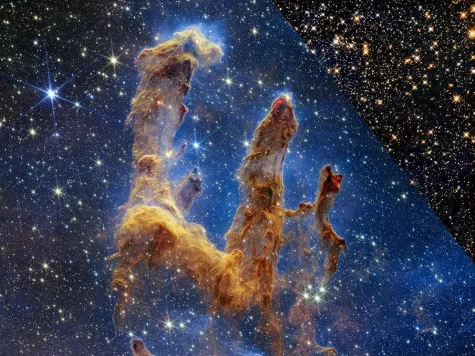
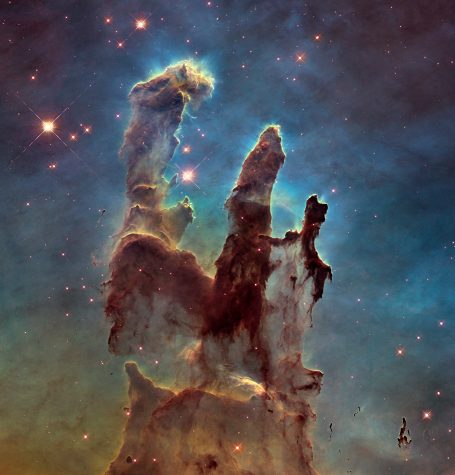
Initial concept designs for the JWST started in 1996. A potential launch in 2007, and a $1 billion budget for construction and launch. The project was bombarded with constant delays and overruns but the project turned out to be overwhelmingly successful.
After an estimated $10 billion budget at the end of its construction, it was completed and remarked on by scientists and the media. The JWST has a main mirror that is 21 feet wide, 6 times larger than the whole area of the Hubble Telescope. It is plated in gold as it reflects infrared very well. The use of infrared vision means it has to be kept very cool because it captures heat energy. It’s protected by a giant sun shield the size of a tennis court to keep it cool. It is in orbit around the Sun to keep a stable orbit and prevent any heat radiation from the Earth or Moon. It’s kept in Earth’s shadow all time because it orbits the Sun at the same speed and rotation as Earth.
JWST has 4 current mission goals. To search for the light of the first stars created right after the Big Bang, study galactic formation and evolution, understand star formation and planet formation, and study interplanetary origins and origins of life.
You may also be asking, why is the JWST important? James Webb allows us to answer questions about the Universe. It’s almost like a time machine. We can see so unbelievably far that we can observe the universe’s infancy. Light takes so long to travel that far that what we see is the ancient Ghostlight of stars and galaxies that may not even exist anymore. But it lets us know how the early galaxies formed and what allowed them to form. We may someday see what started our Universe and how it formed, what coaxed stars into being, and how did such massive black holes end up in the middle of our galaxies? We want to answer these questions to find our place in the universe.
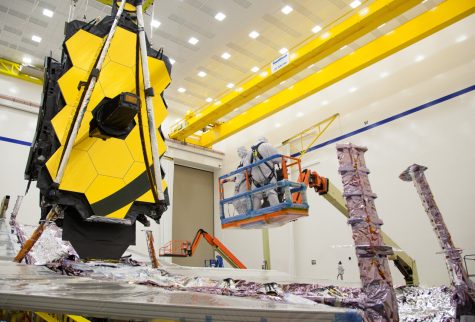
Are you also interested in our amazing universe? If you have any questions or comments, leave them in the comments below.






























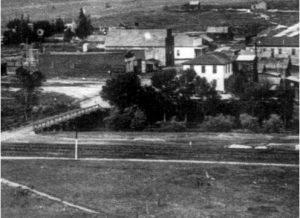

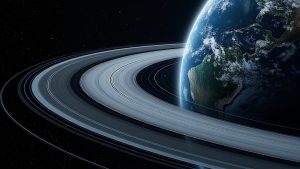



Olivia Huffmire • Apr 10, 2023 at 7:24 pm
WOW!! Okay, I know I read this late but this is seriously so cool. You write really good science-y articles BTW. Never knew about the telescope. Good Job!
Candice • Nov 10, 2022 at 11:07 am
I can’t wait to see if they accomplish their main goals about finding out what is in the universe! It’s seriously so cool!
dominic • Nov 10, 2022 at 11:07 am
wow technology has came so far that is crazy you can really see the little details from the James Webb telescope. I Personaly think that we are not alone to this day we have heard many things but we really have not explored that much of anything like 5% ocean 8% space (i think) so i think we are not alone